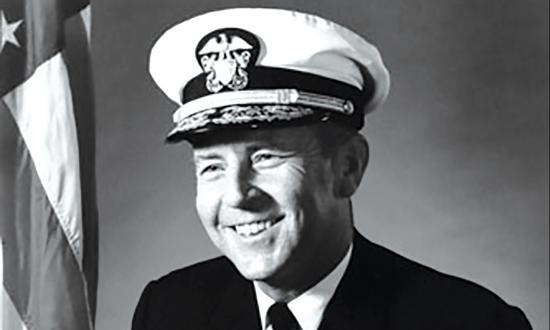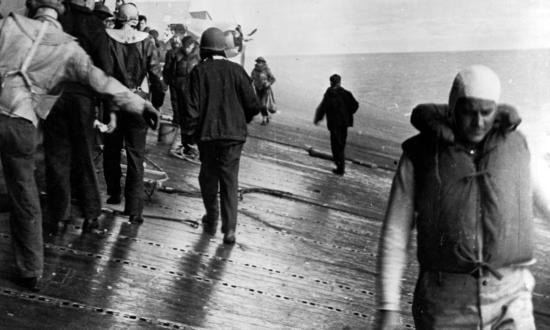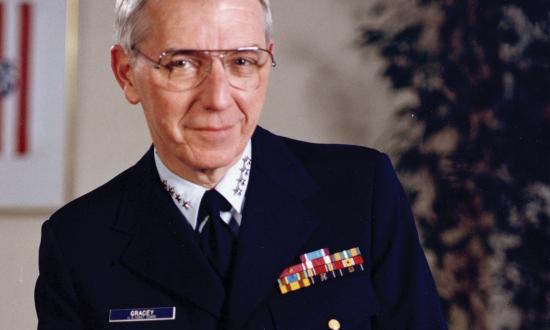Ever-Aggressive Halsey
Bruce J. Kennedy
Your excellent April issue was chock-full of interesting information from cover to cover. Its great articles and letters, though, left this novice with some unanswered questions.
Norman Friedman well explained Nikita Khrushchev’s motives in placing ballistic missiles in Cuba in “Debacle at Bahia de Cochinos,” but it was unclear why U.S. Navy vessels and aircraft were included in the CIA’s invasion plan if U.S. involvement was supposed to be clandestine. It appears from William Smoot’s oral history excerpt, gratefully included with the article, that U.S. Navy sea and air assets arrived on scene even before the CIA-trained Cuban experts did. What kind of “plausible denial” of direct U.S. involvement would that have allowed President John F. Kennedy?
Elsewhere, Michael Gabbola states in his “In Contact” letter that the commanding officer of the USS Enterprise (CV-6) had secret orders prior to the Pearl Harbor attack that were at variance with the general orders that Admiral Husband Kimmel and General Walter Short, the U.S. commanders in Pearl Harbor, had issued: “no offensive action until Japan had committed an overt act.”
Where did such special operating orders originate? They certainly would not have been issued by Kimmel, who had to operate within the confines of his restraining orders.
Editor’s response: Mr. Gabbola quoted an aviator on board the Enterprise as stating that Vice Admiral William F. Halsey, who was on board the “Big E” as the commander of Aircraft, Battle Force, gave “instructions that the secrecy of our mission [to deliver F4F Wildcats of Marine Fighting Squadron 211 to Wake Island] was to be protected at all costs. We were to shoot down anything we saw in the air and bomb anything we saw on the sea.” In his memoir, Admiral Halsey’s Story, the admiral recounted a final conversation with Admiral Kimmel before the Enterprise left Pearl Harbor:
We fully expected that this cruise would take us into the lion’s mouth, and that at any moment an overt act would precipitate war. Before we shoved off, I asked Kimmel, “How far do you want me to go?”
His reply was characteristic: “Goddammit, use your common sense!”
I consider that as fine an order as a subordinate ever received. It was by no means an attempt to pass the buck. He was simply giving me full authority, as the man on
the spot, to handle the situation as I saw it, and I knew that he would back me to the hilt.
Nuclear Close Call
Ed Bales
I read with great interest Douglas Gilbert’s article on the Cuban Missile Crisis, “Black Saturday Declassified.” I served as an officer on board the USS Beale (DD/DDE-471) from January 1961 to August 1963. In April 1961, we, along with the Bache (DD/DDE-470), were directly involved in the Cuban Bay of Pigs invasion. The number 4 was painted over on each of our ships, so we were DD-70 and -71, and we escorted the CIA-leased Houston from Nicaragua into the Bay of Pigs. I enjoyed April’s “Debacle at Bahia de Cochinos.”
I also was involved in the Cuban Missile Crisis and the surfacing of Soviet submarine B-59. On the night of 27 October 1962, I was one of the three Beale ship handlers who were part of Task Group Alpha’s antisubmarine force involved in the location and surfacing of B-59.
I would like to make some clarifications about what happened that night. The planes were dropping sonobuoys, not depth bombs. At no time did we drop practice depth charges. According to the Beale’s log, we did drop five hand grenades, which was the international signal for submarines to identify and surface.
I was on deck when B-59 surfaced. She was completely lit up by our searchlights and those of helicopters and other ships. We remained about 500 yards off her beam. The men coming out of the hatches looked very sick and weak. At that time, we had no idea why they were in that condition or what almost happened below the surface.
Captain Vasily Arkhipov did truly stop World War III. In later interviews with his wife, she said the reason he refused to agree to launch one of the sub’s nuclear torpedoes was because he had been executive officer of an early Soviet nuclear sub [K-19] that nearly had a core meltdown; most of the crew died of painful radiation poisoning. He had experienced nuclear destruction, and it affected his outlook on life.
As for us, we were just doing the job we were trained for, and the specialized Task Group Alpha antisubmarine force proved its value.
Adak-Appropriate Attire
Commander Michael Huete, U.S. Navy (Retired)
The April issue included an “As I Recall” column by Rear Admiral John T. Coughlin concerning Patrol Squadron (VP) 22’s preparations for a 1966 deployment to Adak, Alaska. Fourteen years later, I was a lieutenant in VP-17, another Barber’s Point P-3 squadron, when we also were tasked with sending a detachment to Adak, which then normally was the purview of Moffett Field–based squadrons.
Under Commander Gene Bowman, our commanding officer, we followed much the same preparatory work as Rear Admiral Coughlin’s squadron had—with one possible difference. Rear Admiral Coughlin did not mention having a problem obtaining cold-weather clothing for flight crews and ground personnel, which VP-17 did have. The Pacific Fleet supply officers disapproved all our requests for such clothing on the grounds that VP-17 had a tropical coded UIC (unit identification code) hence could not be issued cold-weather gear. All appeals up and down the various chains of command were in vain; even the Commander, Patrol Wings Pacific, was unsuccessful at breaking the gear free. And civilian cold-weather clothing was not available commercially in Hawaii.
Commander Bowman’s solution was to include a small group of scroungers with our advance party and send them to the Elmendorf Air Force Base Defense Reutilization Management Office (aka “the dump”). It turns out that the Air Force had thrown out a large amount of perfectly serviceable gear that we were glad to get, even though it was all stenciled “USAF.”






